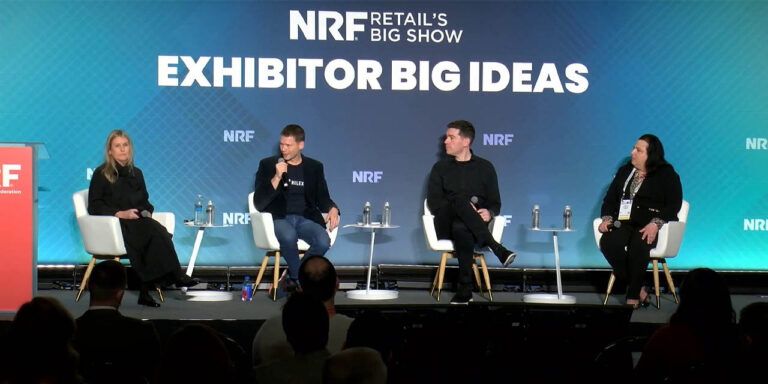Five challenges in pet supply retail and how to tame them
Mar 20, 2023 • 7 min
Over the last three years, we’ve seen a significant and steady rise in pet supply retail. Pet adoptions spiked during the pandemic as people sought companionship during quarantine. Since then, with the rise in remote working, many people are spending much more time with their pets and giving them more attention, driving increased demand for pet supplies and accessories. Increased sales, combined with the acceleration of omnichannel strategies throughout 2020 and 2021, have driven pet retailers to focus more than ever on the fastest route to fulfilling customer demand.
An increasingly competitive sector, pet retail sees consumer loyalty and satisfaction hinging on personalization, quality, and speed of service. While the opportunity in this sector is significant, the route to profitability & sustainability is challenging. Retailers thriving in pet supply retail recognize the importance of advanced planning technology to meet growing complexity and evolving business needs.
We’ve identified five critical challenges that today’s pet specialty retailers face and our recommendations for how to tame them.
1. Omnichannel retail is not only here to stay but still growing.
While consumers’ return to in-store shopping is on the rise, we’re seeing a lasting shift in behavior, with, on average, 39% of consumers continuing to shop omnichannel. In the pet specialty sector, we’re not only seeing existing retailers expand their channel offerings but the emergence of new players in the market, including online-only.
As consumer preferences continue to drive omnichannel shopping, retailers must understand the nuances of channel-based demand. They need the ability to incorporate factors relevant to each channel into their forecasts. For example, seasons, promotions, and in-store events, such as pet adoption drives, will influence local store demand. In contrast, product presentation, such as position on the homepage or in search results, will affect online demand. The only way to effectively forecast multiple channels is with an automated system to interpret sales data and external factors together.
Retailers must also be able to prioritize inventory by channel. Items like flea treatments and dog foods that people buy regularly or via subscription may be more prone to home delivery or BOPIS. Other items like pet bedding and accessories that consumers prefer to touch before purchasing may primarily sell in-store. The retailer needs to be able to allocate each item in the assortment and avoid over or understocking any one channel. Virtual ringfencing enables the retailer to centralize their inventory while maintaining clear, channel-specific replenishment allocations.
2. Complex and diverse assortments require varied planning strategies.
Pet retailers typically offer an extensive range of products, including packaged and fresh foods, pet clothing and furniture, over-the-counter and prescription medications, toys and small accessories, and in some cases, live animals. Inventory planning for such a diverse assortment that considers fast- and slow-moving products cannot be done manually and be accurate and efficient.
Managing fresh items is critical to many retailers’ planning processes, but pet retailers have some unique challenges. Like a grocer, pet retailers manage various short-life products, including packaged foods, fresh and cooler items, baked goods, and medications. Further, this product group also has a range of demand spikes and lags.
For example, demand for over-the-counter flea and tick treatments may spike in summer. However, if these products are not accurately forecasted, the retailer risks losing sales due to stock-outs or wasting product because the overstock will expire before the following season. Other fast-moving products, such as baked treats and fresh and cooler items, must be replenished daily or intra-daily and to the correct locations to meet demand. If they are not, inventory transfers between locations and over or under-stocks can drive up costs, result in lost sales, or lead to waste.
Perhaps the most unique “fresh” items that pet retailers must manage are live animals. Many pet retailers sell fish and lizards, birds, small rodents like hamsters and mice, and in some cases, dogs and cats. Beyond the costs associated with these animals are the ethical and legal implications of mismanagement. Pet retailers need to be able to forecast the animals themselves as well as the food and supplies to care for them while in the store, which drives an extra layer of complexity.
Pet retailers need to be able to manage fresh and live inventory along with larger, slow-moving products such as furniture, kennels, toys, and seasonal items. The only way to accurately manage that level of diversity and complexity is with an automated and modern forecasting and replenishment system that can centralize planning across all categories, locations, and channels.
3. Complex replenishment demands need an integrated and agile supply chain.
For pet retailers, who manage extensive ranges and diverse seasonal demands, it’s vital to see and measure the impact of decisions made in one function across all others. Integrated supply chain planning uses stores & channel projected inventory requirements and forecasted online sales to drive DC replenishment, creating a connected supply chain with a more efficient flow of goods. This method provides the retailer with end-to-end visibility into the impacts of events such as promotions or upcoming seasonal allocations throughout the supply chain.
Lead times, especially when dealing with long-distance suppliers like those in East Asia, can be challenging to predict and plan. An effective planning system should be able to manage replenishment orders across varied suppliers near and far.
For example, most Chinese manufacturers don’t ship products during the Lunar New Year. A planning system should be able to incorporate this type of restriction, apply it to stores’ demand data, and automatically adjust orders early enough to ensure high availability during the affected period. Further, persistent supply chain disruptions frequently necessitate dynamic changes in sources that can only be solved with an adaptable solution that allows retailers to optimize their networks and automatically identify the most cost-effective supplier option to meet demand.
Seasons and promotions have start and end dates, but retailers must plan well in advance to ensure distribution centers are prepared and stores are stocked appropriately during those dates. A flexible system with user-configurable rules enables retailers to quickly create accurate replenishment plans for each store and product without extensive manual work. When planning a new promotion, for example, the promotional forecast will inform the products and quantities for each store. Planners can establish rules that distribution centers should push 50% of the forecasted demand to stores far enough in advance for store associates to build displays. The promotion plan is immediately visible in the distribution center forecast, driving orders and ensuring that the right products go to the right stores at the right time.
Another essential replenishment for retailers is the ability to collaborate effectively with suppliers. Retailer must be able to engage in long-term planning with suppliers near and far and give them visibility into forecasts and upcoming seasonal and promotional activities. When both parties can work together to ensure that shipment levels are optimized, lead times are transparent, and potential disruptions can be anticipated, transportation costs and emissions are reduced, and the need for costly last-minute fixes is minimized.
4. Promotion strategies need to address seasonal items and channels.
Each year retailers run thousands of promotions, from online display ads to leaflets to loyalty club offers, driving up to 50% of sales and store traffic annually. However, running promotions that consistently perform is a significant challenge. In fact, our research shows that one out of every three promotions is not profitable. One of the key challenges retailers face is to analyze and understand which promotions are driving sales and traffic and which are simply costing the business.
Promotions are a significant revenue driver for pet specialty retail, and with so much riding on their success, actionable insights into performance are essential. Further, pet retailers must optimize promotions for seasonal items and sales channels. Demand spikes based on holidays such as Christmas and Easter and weather changes – dog sweaters in winter and flea treatments in summer – require proactive planning and forecasting accuracy. Further, retailers must tailor promotions to the appropriate channel – in-store, online, or both – and allocate products accordingly for efficient replenishment and fulfillment.
Additionally, promotion planning needs to account for socioeconomic issues, such as inflation. Consumer buying power is the critical driver of revenue for any retailer. But for pet retail, whose product range is largely discretionary, offering competitive pricing while minimizing operative costs is essential. With so much potential for boosting margins in a complex market, retailers must improve their promotion processes with modern technology to make intelligent, informed decisions. Promotion optimization technology gives retailers a collaborative tool to plan promotions, set targets, track performance, and react to price changes and inventory levels, adjusting promotions and resources to serve changing needs.
5. Controlling operational costs requires end-to-end workforce management.
Pet specialty retailers have among the highest customer service models in the industry. In-store customer experience – for both pets and owners – and making associates available to advise customers is of the utmost importance. The focus on customer experience extends to distribution center operations as well, ensuring that products are in the right place at the right time.
At the same time, controlling operational costs is a top priority for all retailers today, and personnel is simultaneously one of their biggest cost centers, comprising up to 15% of turnover. However, insufficient people picking in distribution centers and inadequate in-store staff to manage incoming deliveries and maintain stock levels on shelves are among the most common causes of out-of-stocks.
A workforce optimization solution is a strategic tool that manages the workforce, improves the company’s performance, and potentially reduces operational costs. Using multiple data sources to generate workload forecasts, retailers can proactively plan for seasonal or promotional spikes, optimal days for large and small deliveries, and daily in-store team requirements.
When retailers can accurately forecast the volume of work at both distribution centers and stores, they can smooth the flow of deliveries and match the workload to the number of staff available. The result is better in-store availability and online order fulfillment and ensures labor is scheduled efficiently. Further, a system that includes scenario testing enables retailers to understand the impacts of upcoming changes and adapt fulfilment approaches to be more cost-effective and better accommodate peak demand periods.
In addition to controlling costs, workforce optimization can improve employee satisfaction. Improved visibility into upcoming shifts, a more stable and balanced workload, and an improved ability to plan their time are all benefits that drive morale. As retailers compete to hire and retain talent, employee experience improvements will only become more critical to operational success.
Pet retail success requires modern, centralized, and holistic planning.
The pet specialty sector is one of continual evolution, and retailers need to meet today’s challenges and ensure they are future-proofed against tomorrow’s. The core differentiator for any retailer in today’s market is the level of their planning capability. The days of bolting point systems together and working in silos are gone. Modern systems that build integrated, end-to-end processes connecting stores, distribution centers, and suppliers to all activities, including forecasting, promotions, and seasonal demand shifts, are the best way to mitigate risk and stay competitive.




